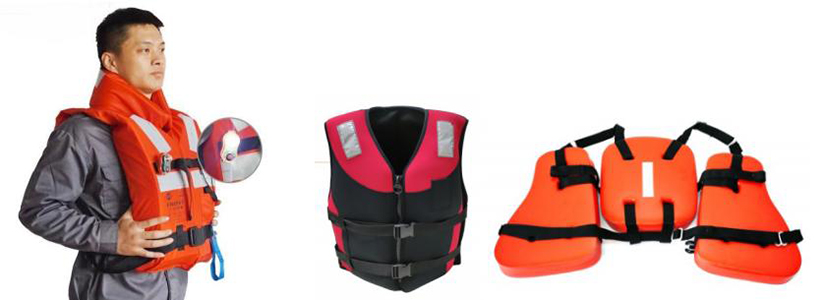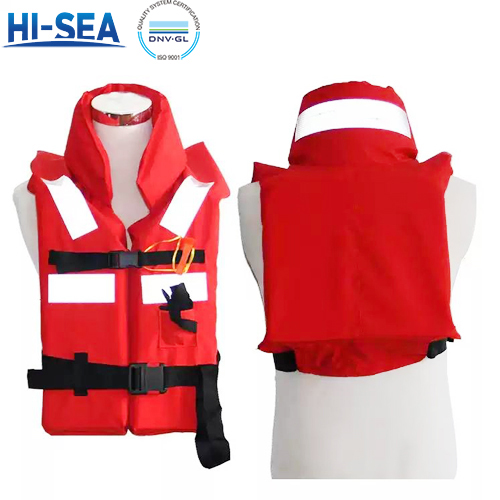
Foam life jacket vs. inflatable life jacket
So far the main stream marine life jacket products in the market include two types, foam life jacket and inflatable life jacket. They are different in structure, material, working principle and use method, etc.
Overview
Foam life jackets typically use polyester or NBR rubber as the fabric, with EPE foam or NBR foam as the filling inside. The main function of foam life jackets is to keep the user afloat in water with the buoyancy provided by the filling material inside. When using them, the operator just needs to wear the life jacket correctly following the instructions.

Inflatable life jackets are typically made of high-strength waterproof materials like TPU nylon composite fabric to create a sealed inflatable vest airbag, along with a miniature high-pressure gas cylinder and a rapid inflation valve, etc. When in use, the inflation device of the life jacket is triggered, rapidly inflating and expanding within a short time to help the user float on water.
This inflation mechanism includes manual triggering, where the operator pulls the inflation device's cord to rotate the lever no less than 90°, piercing the membrane in the high-pressure gas storage cylinder with a needle. Automatic triggering occurs when the life jacket submerges in water after a fall, softening a water-sensitive component in the automatic device, releasing the needle block, allowing a spring to expand and pierce the gas cylinder's membrane, filling the airbag with CO2 gas to generate buoyancy.

Advantages and disadvantages of two types life jacket
Foam life jackets have a simple structure, provide stable buoyancy, and are cost-effective. While they are overall bulky and inconvenient for wearers to perform tasks. Wearers may also feel hot and uncomfortable when wearing them due to their thickness. In emergency situations, wearers may struggle to put on the life jacket correctly in a short time.
In contrast, inflatable life jackets are designed to be lightweight, facilitating wearer tasks with rapid operation, suitable for emergency rescue. It's important to note that inflatable life jackets must avoid sharp objects puncturing or damaging the waterproof layer, as their buoyancy in water is less stable than foam life jackets. Additionally, wearers should be cautious during regular activities to avoid triggering the inflation mechanism accidentally.





